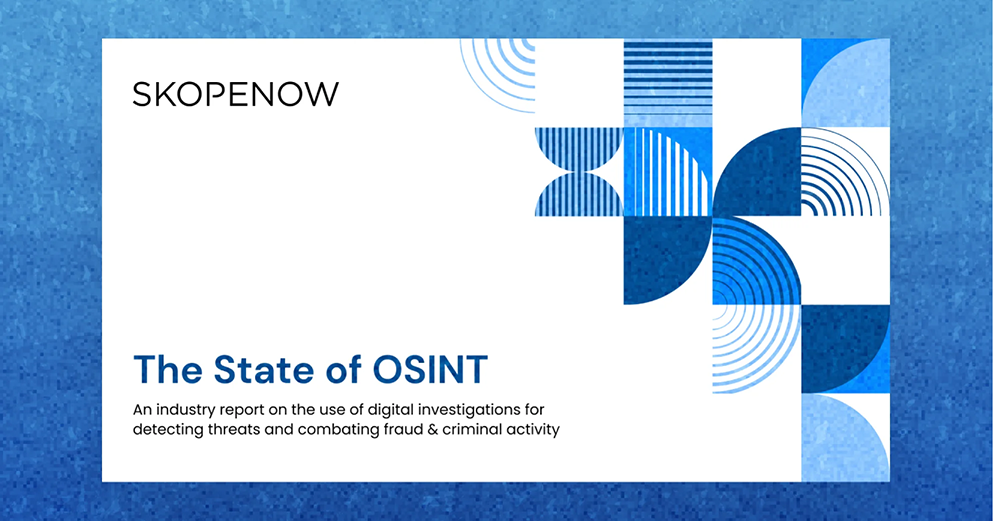February 12, 2025
Too Good to Be True? Understanding the Risks of Free OSINT Tools

Steve Adams
Product Marketing Manager
Open-source intelligence practitioners have long used manual techniques to comb through publicly available data in order to derive insights. However, many users today have come to rely on automated tools to speed up their work. Truth be told, contending with growing caseloads and the massive ocean of public info that is the internet, it’s impractical for today’s investigators to execute OSINT research without software aids.
While some of the premier automation platforms are priced for larger enterprises, the investigators operating on a limited budget might be tempted to use free alternatives hosted on sites like GitHub. That begs the question: “Why would anyone pay for a tool when you can just download an equivalent for free?” As it turns out, there are a few good reasons.
Trusting an OSINT Tool: Key Considerations
When using an OSINT tool—especially a free one—it’s crucial to assess its origins, data handling practices, and legal reliability. Investigators who don’t ask the right questions expose themselves to security gaps, data misuse, and legal risk. They should always try to answer the following first:
Who Built the Tool?
Before using an OSINT tool, learn the following about the tool’s creators:
- Developer Transparency: Is it built by a reputable company, a known developer, or an anonymous group? Many OSINT tool creators choose to obscure their identity, which may be done for legitimate reasons but makes vetting more difficult.
- Motivations: While some tools are developed with the good intention of assisting investigators, others may have hidden agendas, such as collecting user data for commercial or malicious purposes.
- Accountability: If the tool malfunctions or delivers false results, who is responsible? Free tools like those on GitHub may lack recourse for errors, whereas paid tools typically offer vendor support.
Where Is Your Data Going?
Using OSINT tools can mean sharing sensitive data with a third party. Key concerns include:
- Data Misuse: Does the tool store search queries? Could this data be sold or accessed by foreign entities?
- Data Sovereignty: If the tool is hosted overseas, could your data be subject to weak protection laws or violate organizational policies?
- Legal Compliance: Organisations handling personally identifiable information (PII) must adhere to laws like GDPR in the EU or the UK’s Data Protection Act. If a tool processes data in violation of these laws, investigators risk penalties and compromised cases.
Does the Tool Follow Widely Accepted Legal Standards?
For investigations that require admissible evidence, OSINT tools must stand up to legal scrutiny. Avoid tools that lack:
- Transparency: Can you explain where the data comes from and how it operates?
- Credibility: Will your findings from an unvetted tool hold up in court?
- Repeatability: Can another investigator reproduce the same results?
If these questions cannot be answered, the tool may undermine your investigation. Paid OSINT platforms typically provide support, data integrity assurances, and clear sourcing, ensuring their findings are reliable and legally defensible.
By thoroughly assessing an OSINT tool’s origins, data security, and legal standing, investigators can avoid serious risks and ensure their findings are both credible and compliant.
The Pitfalls of Paid Tools
Beyond the concerns mentioned above, even some paid OSINT tools—usually from less-than-reputable vendors—have some serious flaws, such as:
- Outdated or Unsupported Tools: Software might be abandoned by their developers, leading to compatibility issues, outdated sources, and a lack of support. This can render the tool ineffective and unreliable even while its owners charge for access to it, so always check for recent updates and evidence of ongoing maintenance.
- Limited Documentation: Some platforms fail to offer comprehensive user guides or documentation, making it challenging to understand their functionality, limitations, and potential biases. This can lead to misuse and misinterpretation of results.
- False Positives and Inaccurate Data: Some tools are not as rigorously tested as others, increasing the likelihood of errors, false positives, or incomplete data. This can lead to misinformed conclusions and wasted time. Similar issues can arise with paid tools that lack transparency about their data sources and methodologies.
- Hidden Costs: While some tools may be less expensive than others, they could require significant time and effort to set up, understand, or verify their outputs. This time investment can translate into hidden costs for practitioners. Some paid tools may also have complicated and deceptive pricing schemes, such as limitations on usage, extra charges for certain features, or restrictive subscription terms.
Conducting Due Diligence on OSINT Tools
Choosing the right OSINT offering requires careful examination. Whenever you're evaluating a solution, it's essential to investigate its origins, security standards, and data handling practices. Here's a checklist to guide your due diligence process:
For all products:
- Identify the developers: Who created the tool? Are they individuals, a company, or an anonymous group? Research their background and reputation. Look for information about their expertise in OSINT and their commitment to ethical practices. Tool directories like Bellingcat’s Online Open Source Investigation Toolkit can offer third-party validation and developer info on free OSINT tools.
- Scrutinize the website: Is the website professional and well-maintained? Does it provide clear information about the tool's functionality, data sources, and terms of service? Is there a privacy policy that explains how user data is collected, stored, and used?
- Check online reviews and forums: See what other users are saying about the tool. Look for feedback on its accuracy, reliability, and ease of use. Be wary of overly positive or negative reviews, and look for balanced perspectives.
- Assess documentation and support: Does the tool come with comprehensive documentation, user guides, and tutorials? Is there a dedicated support team or community forum where you can get help if needed?
Weighing the Differences
Free OSINT tools can be tempting, especially for practitioners navigating budget constraints. However, the risks they pose often outweigh the benefits. Investigators must critically assess any tool they use, asking questions about its origins, security, and legal implications.
When in doubt, prioritize transparency, reliability, and compliance, regardless of whether the tool is free or paid. While professional OSINT platforms from reputable vendors often require an upfront investment, they can provide the peace of mind and credibility necessary for high-stakes investigations. Remember, the cost of a compromised investigation far exceeds the price of a professional tool.
Join over 1,500 organizations, including 20% of the Fortune 500 and numerous large law enforcement and government agencies, that rely on Skopenow's automated OSINT platform to automatically collect and process relevant publicly available information and make better decisions. Learn more and schedule a personalized demo today at www.skopenow.com/try.


